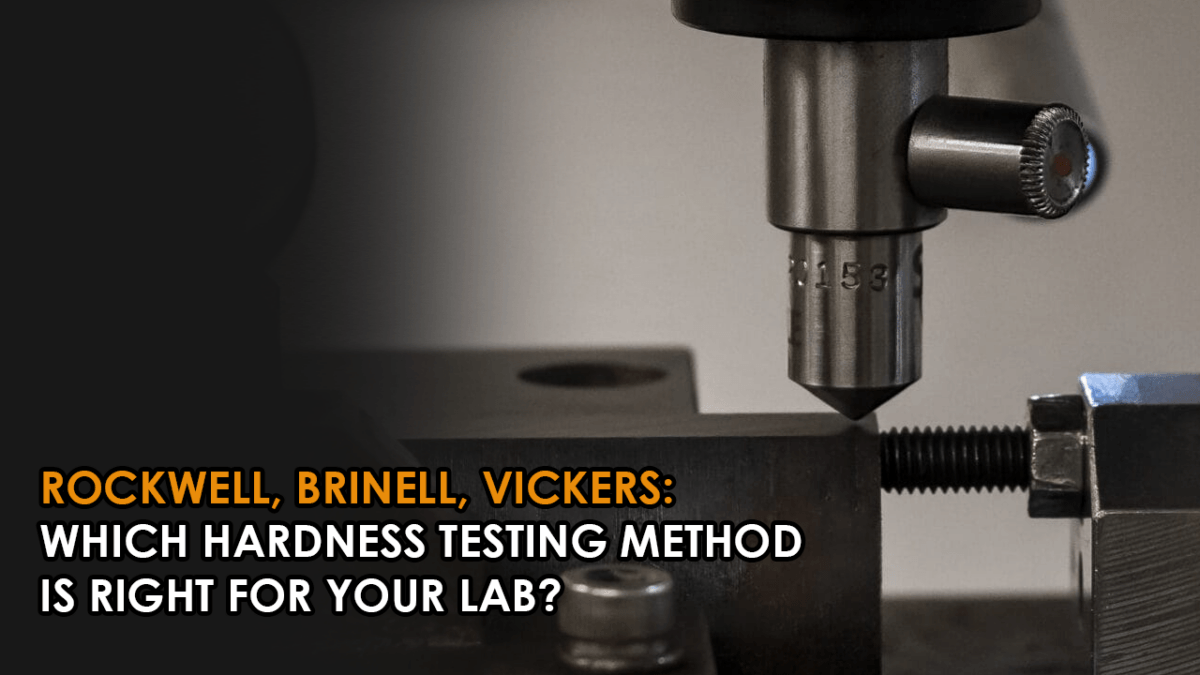Blog
Hardness Testing Methods: Understanding Rockwell, Brinell, and Vickers Methods
Hardness Testing 101: Understanding Rockwell, Brinell, and Vickers Methods
In the world of material testing, hardness is one of the most critical mechanical properties. It reflects a material’s resistance to deformation, wear, and scratching. Whether in manufacturing, quality control, or research, hardness testing methods help ensure materials perform as expected under real-world conditions. Among the many techniques used, Rockwell, Brinell, and Vickers tests are the most commonly applied worldwide.
This guide breaks down how these three popular hardness testing methods work, where they excel, and how to choose the right one for your lab or industrial application.
What is Hardness Testing?
Hardness testing is the process of measuring a material’s resistance to indentation or scratching. It gives insight into a material’s strength and durability. Different hardness testing methods are suited to different materials, sample sizes, and precision levels.
Selecting the appropriate method ensures more reliable results, increases efficiency, and reduces the risk of material failure. This makes the knowledge of these methods essential for professionals in aerospace, automotive, construction, metalworking, and beyond.
Rockwell Hardness Testing
The Rockwell method is the most commonly used due to its simplicity and speed. A minor load is applied to seat the indenter, followed by a major load. The depth of the indentation is measured directly to give a hardness number.
Rockwell Key Features:
Uses steel or carbide balls, or a diamond cone (brale)
Suitable for both soft and hard metals
Comes in multiple scales (e.g., A, B, C) depending on the material
Pros:
Fast and easy
Minimal sample prep
Ideal for repetitive testing in production
Best Use Cases:
Steel and iron alloys
Industrial parts
Flat, smooth surfaces
Brinell Hardness Testing
The Brinell method uses a larger indenter—a steel or carbide ball—and applies a heavy load. It’s ideal for materials with rough or uneven surfaces. After testing, the diameter of the indentation is measured with a microscope to calculate the Brinell Hardness Number (BHN).
Brinell Key Features:
Larger indents
Suited to cast or forged components
Pros:
Excellent for rough or irregular surfaces
Highly reliable on soft metals
Best Use Cases:
Aluminum, copper, and lead
Castings and forgings
Large or heavy parts
Vickers Hardness Testing
The Vickers method is extremely precise, using a diamond-shaped indenter and lighter loads. It works for very small samples or thin materials. The diagonals of the square-shaped indentation are measured under a microscope to calculate the Vickers Hardness Number (VHN).
Vickers Key Features:
Single scale for all materials
High accuracy
Pros:
Great for thin materials or coatings
Suitable for microhardness testing
Best Use Cases:
Surface coatings
Microscopic parts
Lab research
How to Choose the Right Method
The right hardness testing method depends on:
Material type: Soft or hard, metal or polymer?
Sample size: Large casting or small component?
Surface condition: Smooth or rough?
Required accuracy: Production speed vs. lab precision
In general:
Choose Rockwell for fast testing of industrial parts.
Use Brinell for larger, softer materials with rough surfaces.
Opt for Vickers when precision is crucial or samples are very small.
Standards and Compliance
Each method adheres to global testing standards:
ASTM E18 – Rockwell
ASTM E10 – Brinell
ASTM E384 – Vickers
Complying with these standards is essential for accreditation, especially under ISO 17025. It also ensures repeatability and trust in your test results.
Teur Pro Group’s Role in Hardness Testing Methods
At Teur Pro Group (TPG), we offer cutting-edge solutions for hardness testing methods. From selling precision devices to providing ISO 17025-accredited calibration and maintenance services, our mission is to keep your lab compliant and efficient.
We help clients choose the best method for their needs and maintain their equipment to avoid inaccuracies or costly downtimes. Whether you’re testing metals, coatings, or delicate samples, our expertise ensures your results are both reliable and compliant.
Conclusion: Mastering Hardness Testing Methods
Understanding and applying the right hardness testing method is vital to achieving accurate, reliable results. Rockwell offers speed, Brinell excels on rough surfaces, and Vickers delivers unmatched precision. Each has its place in a well-equipped lab or production floor.
By mastering these techniques and working with trusted partners like TPG, you can ensure consistent product quality, safety, and performance across the board.
Need guidance on choosing or maintaining your hardness testing equipment?
Contact Teur Pro Group today
Follow us on LinkedIn for updates and industry insights! Teur Pro Group LinkedIn

